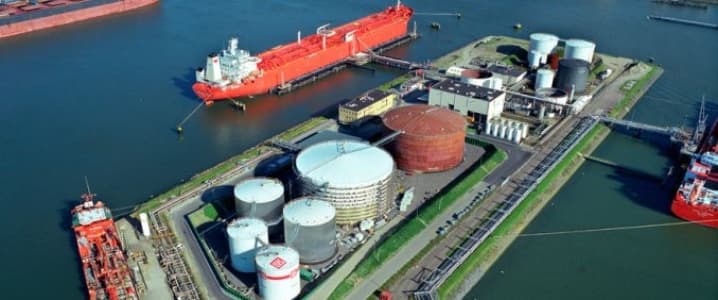With most of the energy world focused on the upcoming OPEC meeting and whether oil ministers will agree on production cuts in order to help boost oil prices, it’s a good time to review why the LNG industry also closely follows the price of oil.
Traditional Pricing Structure for LNG—Oil Linked Pricing
The vast majority (approx. 70 percent) of the world’s LNG trade is priced using a competing fuels index, generally based on crude oil or fuel oil, and referred to as “oil price indexation” or “oil-linked pricing.” The original rationale for oil-linked pricing was that the price of gas should be set at the level of the price of the best alternative to gas. Historically, the best alternative was heavy fuel oil, crude oil or gas oil. While the substitutability of oil and gas has decreased over time, the traditional oil-linked pricing remains.
This is particularly the case in the Asia-Pacific region where LNG contracts are typically based on the historical linkage to the Japanese Customs-cleared Price for Crude Oil (JCC, or the “Japanese Crude Cocktail”). This is because when LNG trade first started in Japan, Japanese power generation was heavily dependent on oil so early LNG contracts were linked to JCC in order to negate the risk of price competition with oil.
For suppliers, oil-linked contracts have traditionally provided a means to secure project financing and a return on investment. Since LNG projects are multi-billion dollar investments, underpinning the project with long-term, oil-linked contracts is usually necessary to secure project financing by lenders. For buyers with security of supply concerns, most notably Japan and Korea, oil-linked contracts have also ensured that enough new LNG supply comes on the market since the long-term contracts underpin the project and reduce the risk for the project developer.
In North America, the gas market originally operated in a similar manner with long-term, oil based contracts. When the North American gas markets were liberalized in the 1980s and 1990s, a “hub” system developed whereby natural gas is now traded at over forty principle centers, or hubs, spread across North America. The best known is Henry Hub in Louisiana, which serves as the pricing reference for NYMEX gas futures contracts.
Recent Pricing Issues
In the past several years, there has been increased discussion between Asian buyers and sellers about alternative pricing structures for long-term LNG contracts. The emergence of the United States as a major LNG exporter has had a significant impact in moving this discussion along since most U.S. LNG contracts have been “take or pay” style contracts linked to Henry Hub, instead of oil, with the buyer paying a liquefaction tolling fee to the LNG export terminal developer. Related: Geopolitical Overhaul: What Will A Post-Obama World Look Like?
At the moment, the LNG market is oversupplied with new supply coming on the market from Australia and Papua New Guinea. In February 2016, Cheniere Energy shipped the first U.S. LNG export cargo and has been ramping up production ever since. With four more projects under construction and many more projects proposed, the U.S. is expected to become one of the world’s largest LNG exporters in the coming years.
(Click to enlarge)
This new supply is coming on the market at a time of weak demand in most regions due to a variety of factors, including a tepid economic outlook for most countries and competition from cheap coal and renewables. As a result, it is a “buyers” market and buyers are using this to their advantage to seek more flexible pricing and contract terms. Given the current oversupply, new buyers are increasingly reluctant to sign long-term contracts linked to oil and are instead seeking more mid-term and short-term contracts. Related: Oil Comes Back To Life In Canada
Buyers have also been turning to the growing spot market for LNG with Asian spot LNG prices already halved since 2014.
(Click to enlarge)
While it is open to debate how much the spot market will continue to grow and whether LNG will eventually trade as a true global commodity like oil, most industry observers expect the LNG markets to continue to evolve from the traditional rigid structure of long-term, oil-linked contracts to a more dynamic, flexible structure that better reflects market realities.
By Susan Sakmar for Oilprice.com
More Top Reads From Oilprice.com:
- Iran Won’t Cut, Boldly Ask Saudis To Cut 1 Million Bpd
- Saudi Arabia Is Willing To Sink The OPEC Deal
- Suckered Again: How Likely Is An OPEC Production Cut?




















